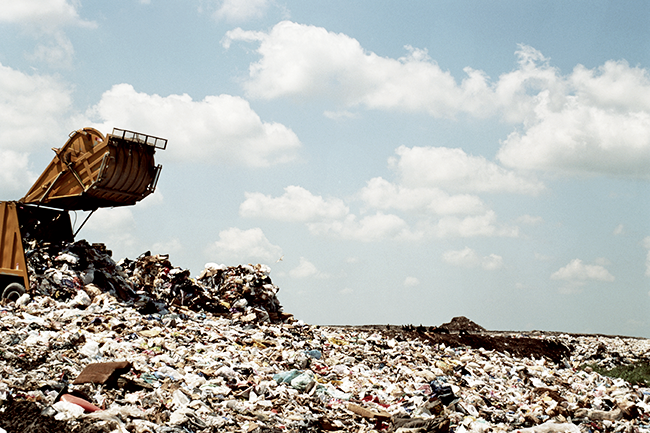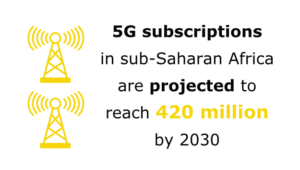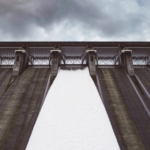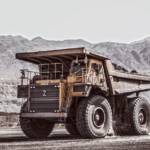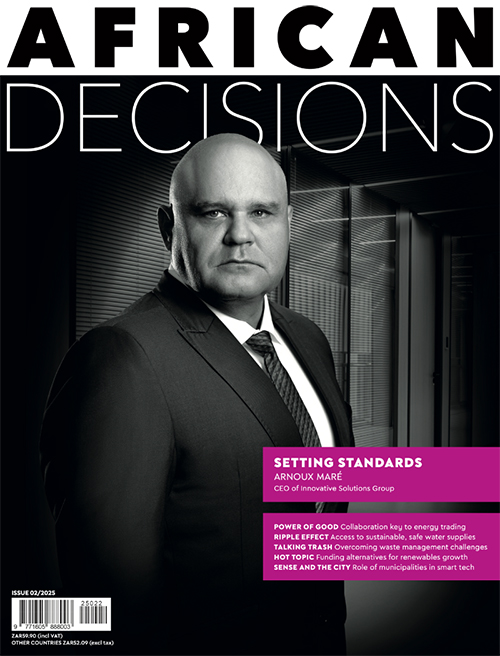‘Waste is a resource. It’s money in your hands,’ says Nick Mannie, technical director of waste management at global engineering consultant Aurecon in Gauteng. ‘Instead of dumping waste in landfill sites, we need to explore more efficient ways to extract its value.’
It may be hard to imagine any value in rubbish: a pile of black bags spilling over in a landfill, old tailings from a gold mine on the highveld or the ever-growing amount of e-waste that is swamping Africa in the form of broken mobile phones, gaming consoles and computers.
Most people would be glad to see all this rubbish gone. However, there’s a better, more integrated way of seeing the ‘bigger picture’ of what waste actually is. For instance, Janez Potočnik, former European commissioner for environment, said: ‘There is gold in waste – literally. It takes a ton of ore to get one gram of gold. But you can get the same amount from recycling the materials in 41 mobile phones.’
Slowly, Africa is looking towards waste-management champions such as Switzerland, Germany, Austria, Sweden and Denmark for guidance. We are rethinking the way things are thrown away, so as to dispose of them responsibly and, where possible, to recover energy, recycle or reuse them.
In a presentation to the Johannesburg Waste Summit 2015, director of environmental services and technologies at South Africa’s Department of Science and Technology Henry Roman said: ‘At least ZAR25 billion worth of “value” is locked up in South Africa’s waste streams, of which we’re sending ZAR17 billion to landfill.
‘While South Africa has embraced the principles of the waste hierarchy in legislation, it still landfills approximately 90% of all waste generated. Waste has both social and economic value. Moving waste up the hierarchy provides opportunities for socio-economic development – creating new jobs and businesses. It assists in maximising resource recovery for downstream manufacturing growth, and reduces the reliance on natural resources, which are declining.’
The waste-management hierarchy mentioned by Roman shows how waste should best be managed, according to an order of preference. Generally presented as a pyramid diagram, the least desirable option (waste disposal) is at the bottom and the most favoured option (waste prevention) at the top. The tiers in-between move progressively up in desirability: energy recovery, recycling, reuse, waste minimisation.
Most African countries are still at the least desirable tier of this hierarchy and dispose of their waste at traditional landfill sites. And with rapid urban-population growth, many rubbish dumps are running out of space. However, South Africa’s waste-management legislation is sophisticated and, in order to move up in the pyramid, calls for the classification of waste streams within 180 days of generation, the sustainable disposal of hazardous waste and the auditing of waste.
As stated in South Africa’s Waste Research, Development and Innovation Roadmap: ‘Waste streams that have presented as opportunities globally and are emerging as opportunity streams in South Africa, include organic waste – such as food waste, biomass and sewage; recyclables – plastic, metal, glass, paper, waste electrical and electronic equipment, and tyres.These waste streams, recognised for their secondary resource potential, are being targeted for diversion from landfill into materials and energy recovery.’
South Africa is aiming to achieve zero waste to landfill by 2022. ‘We’re caught between two worlds,’ says Mannie. ‘We’ve got the legislation but there’s a lack of policing on the ground. The biggest drawback is a lack of education and awareness among the population.’
Driven by South Africa’s Department of Environmental Affairs, REDISA is a public-private partnership that drives an extended producer responsibility programme, set up to manage tyre waste.
‘Funding for the REDISA plan’s implementation is collected from tyre manufacturers and importers, who are mandated to pay a waste-management fee directly to REDISA – for the first time holding manufacturers accountable for what they produce through a system that ensures waste tyres are recycled into worth,’ says Hermann Erdmann, CEO of REDISA.
‘From design to production, distribution to recovery, disposal to recycling, REDISA connects everyone to ensure the tyre waste stream is efficiently managed with minimal impact on the environment.’
Before the initiative was established, only 4% of the country’s discarded tyres were being recycled. With compliance from both local manufacturers and tyre importers, that figure is now at around 70%.
A handful of specialised waste-management firms – such as Wasteman, EnviroServ and Interwaste – operate in South Africa and sub-Saharan Africa. The barriers to market entry for these niche services are high because of the strict licensing and permit procedures, and the costs of developing facilities.
‘Understanding the client’s waste-management requirements is of utmost importance. We carry out in-depth on-site waste audits that take cognisance of the country’s current legislation, regional by-laws and all of the organisation’s permits relating to all forms of waste and recyclables generated,’ says Jan Labuschagne, Wasteman CEO. ‘Once a sound understanding of the waste output has been obtained, Wasteman designs a unique solution that addresses the waste hierarchy.’
These solutions include, but are not limited to, source separation systems; on-site waste processing, on-site waste tracking and monitoring; waste avoidance programmes; waste-awareness training; and waste sampling, classification and analysis. ‘Value-added services include real-time site inspections via 3G-enabled tablets; real-time waste data capture through a barcoded waste-tracking system, web-based monthly reports, and key performance area reports to manage trends and generate management programmes,’ he says.
‘At least ZAR25 billion worth of “value” is locked up in South Africa’s waste streams, of which we are sending ZAR17 billion to landfill’
In 2015, the UK-based waste-management firm Averda – whose footprint includes Angola, Congo-Brazzaville, Gabon, Morocco and South Africa – became the majority shareholder in Wasteman. As a result, waste-management plans are under way for various African regions. According to Labuschagne: ‘Averda will be introducing new technologies on alternative to landfill treatment plants, refuse derived fuels, composting and waste to energy, and fine-tuning our current processes.’
Meanwhile, Interwaste launched South Africa’s first refuse-derived fuel plant in Gauteng earlier this year. The plant shreds solid general industrial and municipal waste – which would otherwise go to landfill sites – to a particle size of less than 20 mm. This is then converted as an alternative energy source.
‘Through the commissioning of such solutions, companies are able to lessen their reliance on fossil fuels, which have a high environmental impact, including acid mine drainage and reject coal, for example,’ says Interwaste CEO Alan Willcocks.
‘As such, not only are businesses able to drastically improve their emissions profile but so too are they able to pay back their investment within a mere five years – where the fuel is substantially more economical.’
The company introduced the continent’s first fuels-blending platform of its kind in mid-2014. In a joint venture with cement producer Lafarge, the plant creates energy by blending hydrocarbon waste from a wide range of industries to be used in the pre-calcination process at cement kilns.
Further afield, waste-management firm EnviroServ has entered the Ugandan market with East Africa’s first oil waste treatment plant. Dean Thompson, EnviroServ group CEO says: ‘We partnered with local stakeholders to deliver quality sustainable solutions suited to the unique Ugandan conditions.
‘Our waste treatment and disposal facility at Nyamasoga is a technologically advanced H:H landfill site that can handle both liquids and solids. Within the facility, there is a processing plant that can process leachate and other liquids for disposal.’
Landfill sites for hazardous waste are classified according to the type of waste they may accept, with H:H landfills able to handle all four hazardous levels, including Class A – extreme and high risk.
The leading waste-management firms all own and operate hazardous waste sites. For instance, in South Africa Wasteman owns the Class A sites Vlakfontein (outside Vereeniging, Gauteng) and 50% of Vissershok (Western Cape).
‘With the exception of nuclear/radioactive waste, which is waste with activity above background radiation levels, Wasteman manages extreme-hazard to low-hazard waste materials,’ says Labuschagne. ‘Industry areas serviced include petrochemical, mining, metal processing and chemical processing sectors.’
The big companies also offer their clients materials recycling, where waste streams are typically sorted at the source on-site and processed in an off-site plant. The advantages are reduced costs relating to the transport of waste to the landfill sites as well as disposal fees; earning rebates on the recyclables that would have been destined for landfill; and the recovery of value from the recycling process.
In Africa, labour intensive manual recycling is still more efficient than most high-cost technologies. The informal sector of waste pickers plays a significant role and has organised itself globally in movements such as the South African Waste Pickers’ Association, which represents more than 10 000 affiliates who work on the streets and waste dumps, earning their livelihood from recycling.
Throughout Africa, countries are at various stages in transitioning up the waste hierarchy. Experts agree that there are different paths to achieving zero landfill and that every nation must find its specific solution.
‘Importantly, waste management needs to be considered at the very beginning of a project, and not as an after-thought,’ says Mannie. ‘This will see the integration of effective waste management into projects from the outset, as opposed to including it as an add-on.’
Only then will the value of waste be unlocked, and the gold extracted from discarded mobile phones, rather than lie ‘wasted’ on the continent’s landfill sites.
By Silke Colquhoun
Image: Gallo/GettyImages

